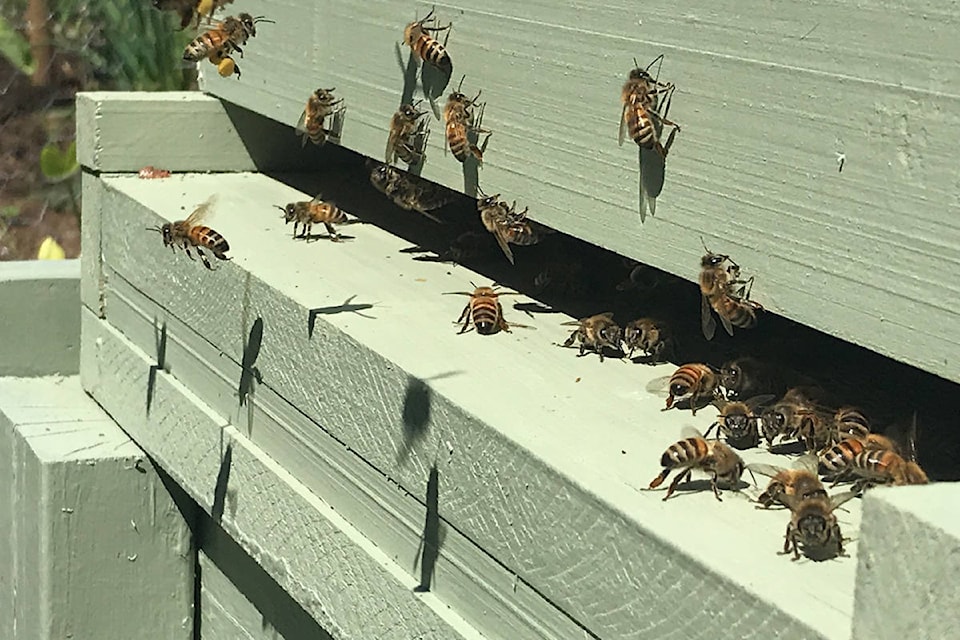As the sun continues to shine and plenty of flowers are in bloom for our bees, you may notice that your honeybee population is beginning to multiply in numbers.
This is what we want to see: a healthy, growing colony. But how do you know if your hive is healthy? And what should you look for during your inspections?
Before you enter the hive, take a look at the entrance. This is the first indication of hive strength. Do you have lots of foragers flying in and out of the hive? Are there plenty of bees guarding the front entrance?
You should be seeing lots of activity, but remember, hives are active at different times of the day, so take a census as the day progresses. The hive should be most active with full sun.
Next, open the hive. My favourite indication of a healthy hive is when the honeybees peer up at you from between the frames. This curiosity without aggression is a reminder that the honeybee does not want to hurt you and their calm demeanour typically means that the queen is present.
Take out a frame at the very end so you have wiggle room to remove the centre frames. The centre is where you usually find the brood (babies) and where you really get a feel for the health of your colony. Pull out each frame one at a time and inspect both sides. You want to see a consistent ‘brood pattern.’ This ‘brood pattern’ is best demonstrated on frames with capped larva. You should see a solid pattern across the frame. A spotty brood pattern may be an indication of a struggling or diseased colony.
As you continue to inspect the hive you should see frames with eggs and larva. This is best seen by holding the frame up in the air with the sun at your back. If you peer into the bottom of the cells you should see white juicy larva, swimming in a shiny liquid (royal jelly). Discoloured or dry larva may be an indication of disease. As you continue through the hive you should see frames with a diversified pollen selection, nectar and capped honey. Your hive should be full of bees but remember to provide room for their continued growth.
Disease may be prevalent in honeybee colonies; this is why each region has a local apiary inspector. Our inspectors are incredibly knowledgeable and their services are free.
If you have an inkling of disease within your hive, reach out to your inspector before the problem persists. You can find your local inspector by following this link: https://bit.ly/2MrwmFw
A good beekeeper is a knowledgeable beekeeper so feel free to ask me any questions.
Rachel Halliwell is a Bee Master Certified beekeeper in the Comox Valley. Her website is www.homegrownbee.ca
